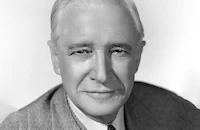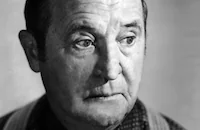Within the Law

Brief Synopsis
Cast & Crew
Gustav Machaty
Ruth Hussey
Tom Neal
Paul Kelly
William Gargan
Paul Cavanagh
Film Details
Technical Specs

Synopsis
When shopgirl Mary Turner is framed by one of her co-workers for stealing store jewelry, hard-boiled department store owner Mr. Gilder prosecutes her and insists that the judge sentence her to three years in prison rather than allow her to serve a probation at the store. In prison, Mary asks the librarian to recommend reading material, and when Mary tells her the length of her prison sentence, the librarian recommends the novel Gone With the Wind . Because she has decided to exact revenge on the man who ruined her life, Mary declines the novel and instead asks to read law books. During her three years behind bars, Mary befriends fellow inmate Agnes, a gangster's moll, who introduces Mary to gangster boss Joe Garson when they are released from prison. Mary soon becomes the mastermind of the gang by counseling them to always stay within the law, take advantage of the loopholes and confound the police and prosecutors by legal trickery. Mary soon decides to take revenge on Gilder by involving the gang in a scheme to extort a large sum of money from him. When Mary sends Agnes to Gilder's store to pose as a customer and raise Gilder's suspicions that she is paying with a bad check, Agnes is arrested and the gang sees to it that her check is good. The false accusation causes Gilder embarassment and forces him to pay Agnes a settlement of $20,000 to keep the incident out of the courts. The second part of Mary's revenge scheme begins when she starts to date Gilder's son Richard, who does not know about Mary's past. One month passes, and after Mary and Richard secretly marry, Richard introduces her to his father, who immediately reveals Mary's past to his son. Although Mary admits that she married Richard to avenge herself, Richard refuses to believe that she is capable of stealing and ignores his father's demand that the marriage be annulled. Later, just as the male members of the gang are about to steal a valuable Rembrandt painting from Gilder's house, Mary and Agnes learn of the robbery and go to Gilder's to try to stop them. When Mary is caught in Gilder's home, she is accused of the attempted theft until it is discovered that gang member "English" Eddie Morton tipped off the police about the theft in order to frame Mary. Shortly thereafter, it is learned that Eddie has been killed. In order to protect herself, Mary insists that Richard shot Eddie to defend his home, and Richard does not deny the charge. Police Chief McGuire, who does not believe that Richard was the killer, questions Joe, who remains loyal to Mary and confesses his guilt. Meanwhile, Richard is informed by the detectives whom he hired to investigate the store theft that Mary did not steal anything and that the real thief has been caught. Consequently, Gilder repents and begs Mary's forgiveness, and Mary is free to begin her life over with Richard.

Director
Gustav Machaty
Cast

Ruth Hussey

Tom Neal

Paul Kelly

William Gargan

Paul Cavanagh

Rita Johnson

Samuel S. Hinds

Lynne Carver

Sidney Blackmer
Jo Ann Sayers

Ann Morriss

James Burke

Donald Douglas
Cliff Clark
Claude King

Frank Orth
Christina Wells
Laura Treadwell
Mary Beth Hughes
Glorea Robb
Cleora Robb
Psyche Neibert
Rae Daggett
Edward J. Lesaint
William E. Lawrence
Pat Mckee
Helen Dickson
Jessie Arnold
Gertrude Simpson
Dorothy Vaughan
Grace Goodall
Kathryn Sheldon

Naomi Childers
Claire Dubrey
Edward Earle
Edward Kilroy
Tom Collins
Rudy Miller
William Tannen
Ted Oliver
James G. Blaine
Harry Humphrey
Mitchell Ingraham
Alex Pollard
Dorothea Wolbert
Crew
Dr. William Axt
Peter Ballbusch
George Boemler
J. J. Cohn
Edith Fitzgerald
Cedric Gibbons
Charles Lawton
Charles Lederer
Lou Ostrow
Sergei Petschnikoff
Wade B. Rubottom
Douglas Shearer
E. Lloyd Sheldon
Walter Strohm
Dolly Tree
Edwin B. Willis

Film Details
Technical Specs

Articles
Within the Law -
By Richard Harland Smith

Within the Law -
Quotes
Trivia
Notes
According to Hollywood Reporter pre-release news items, actor Lee Bowman was originally set for the part of "Richard Gilder," but was replaced by John King, who, in turn, was replaced by Tom Neal. Hollywood Reporter also notes that casting difficulties for the female lead held up the start of production. This was the first of two American feature films directed by Czechoslovakian-born Gustav Machaty. He previously had directed the M-G-M short The Wrong Way Out in 1938. Machaty is perhaps most famous for the direction of the Czechoslovakian films Seduction (1929) and Ecstasy (1933), the latter starring Hedy Lamarr, and notorious at the time for its nudity. Within the Law was performed on the Lux Radio Theatre program on October 14, 1935, and starred Joan Crawford, who reprised her part from the 1930 film version of the story. According to a December 1938 Hollywood Reporter news item, M-G-M signed Bernard Nedell and Rosalind Russell to star in a radio performance of the story for its Good News radio program. Other versions of Bayard Veiller's play, all under the same title, include the 1917 Vitagraph film, directed by William P. S. Earle and starring Alice Joyce and Walter McGrail (see AFI Catalog of Feature Films, 1911-20; F1.5038); the 1923 Joseph M. Schenck Productions film, directed by Schenck and starring Norma Talmadge and Jack Mulhall; and the 1930 M-G-M film Paid, directed by Sam Wood and starring Joan Crawford and Robert Armstrong (see AFI Catalog of Feature Films, 1921-30; F2.4103 and F2.6436). In addition, a Broadway Television Theatre production of Within the Law, directed by Richard Barr and Richard Lukin and starring Lola Montez and Orson Bean, aired on non-network television on June 6, 1952.















